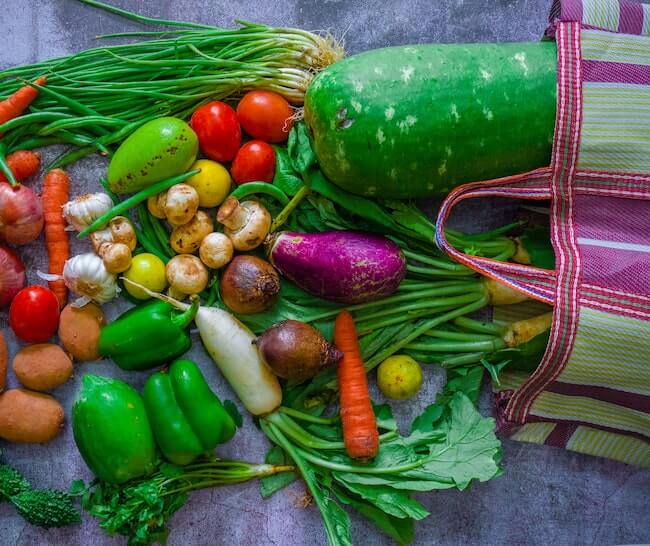Famous as a source of the amino acid tryptophan, turkey is the second most popular poultry meat in the United States. Chicken and turkey comprise most of the poultry intake in the world and the United States.1 In 2021, the average American ate 15.3 pounds of turkey.2
Since 1970, turkey consumption has doubled, with more people replacing ground beef with ground turkey.2 Almost 85% of turkey eaten in America is lean ground turkey, with the rest from turkey breasts3.
Turkey is a leaner protein option compared to red meat. Incorporating turkey adds variety to your diet and offers another healthy poultry meat.
This article delves into the nutritional benefits of turkey, its health benefits and drawbacks, and helpful advice on eating healthier turkey alternatives.
Turkey Nutrition Facts
{{mid-cta}}
Nutrition Profile
This table details the nutrition profile for 3.5 ounces (100 gm) of different types of turkey.
Source of Protein
One serving (or 3.5 oz) of turkey is a rich source of protein, ranging from 17 to 30 g of protein, depending on the type of turkey meat.
Protein is one of three macronutrients that provide the energy and fuel for our bodies to work correctly. As you see above in the table, protein-rich turkey is full of other nutrients that are beneficial to the body.
Choosing rich protein sources with other nutrients can help you get all the nutrients your body needs to thrive and prevent disease.
B Vitamins and Minerals
Turkey meat is an excellent source of B vitamins and minerals.
A 3.5-ounce serving (about the size of a smartphone) of turkey breast provides 74% of the DV for vitamin B3 (niacin) and 62% of the DV for vitamin B6.4
Turkey is a good source of vitamins B12, B2 (riboflavin) and B5 (pantothenic acid).4
The body does not store B vitamins, which are required from our food. B vitamins are essential for energy production, molecule breakdown, and building to allow for necessary pathways and functions of the body.7
Turkey is an excellent source of selenium and a good source of zinc and phosphorus.4
Selenium is essential for reproductive health and thyroid function.8
Zinc helps with cell metabolism, making enzymes, immune function, and wound healing.9
Phosphorus is in your bones and teeth along with DNA and RNA.10
Low in Fat
Turkey breast is the leanest type of poultry with a low-fat content of 2 g in a 3.5-ounce serving size. Chicken is also considered a lean protein option at 3.5 g of fat in a 3.5-ounce serving.11
Turkey is an even leaner option for people closely monitoring their calorie and fat intake.
Health Benefits of Turkey

Managing Diabetes
Protein sources like turkey benefit blood sugar levels, and in weight management, both components are important for managing diabetes.12
In two small randomized controlled trials, blood sugar levels were improved by pairing a carbohydrate source with poultry (chicken or turkey). The addition of poultry lowered blood sugar and insulin levels in individuals with type 2 diabetes.13
Heart Health
Randomized controlled trials, including poultry as the primary protein source, show neutral or beneficial effects on heart disease and stroke risk factors. Abnormal blood lipid (fat) levels are one marker for monitoring heart health.13
In one study, poultry as the protein source did not raise or lower blood lipids (cholesterol or triglycerides), indicating a neutral effect.13
Another study found reduced (or improved) blood lipid levels when eating lean protein choices like poultry, fish, and lean red meat.13
Weight Control
A systematic review including 37 studies found that participants eating increased protein intake reduced their body weight by an average of 2.5 pounds compared to those with lower protein intakes.12
Most studies achieved this weight loss in 15 weeks. Eight of the studies were longer than 24 weeks.12
Protein helps keep you full and prevents mindless snacking.
Adequate protein intake appears to help with weight management in individuals who are overweight or obese more than carbs.12
Downsides of Turkey
While turkey breast is a lean, healthy protein option, some processed versions (sausage, bacon, and hams) can include a large amount of sodium (salt) and fat.
A 3.5-ounce serving of turkey sausage contains 307 calories, 23 grams of fat, 8 grams of saturated fat, and 878 mg of sodium (38% of the DV).14 This is significantly more than turkey breast, dark meat, and ground turkey.4,5,6
All processed meat intake is associated with an increased risk of certain types of cancer.15
The high salt intake in processed foods disrupts the natural stomach lining defense barrier, allowing compounds to enter the lining that can lead to stomach cancer.
Additionally, high-fat diets are associated with an increased risk for stomach cancer.15,16
How to Pick and Cook Healthier Turkey

Choosing the correct type of turkey and cooking method can ensure you gain the health benefits and reduce the downsides mentioned above.
- Choose skinless turkey breast for the leanest and healthiest version.
- Dark meat and lean ground turkey can be a healthy swap for higher-fat ground beef and processed red meats.
- Avoid processed turkey options (sausage, bacon, and turkey ham).
- Roast whole turkey in the oven (avoid frying your turkey).
- Freeze cooked turkey slices for easy meal prep. Use within three or four months for the best quality and flavor.
- Add turkey breast to salads, casseroles, soups, and sandwiches.
- Save the bones to make nutritious turkey stock or bone broth.
Learn More About Healthy Nutrition with Signos’ Expert Advice
Consider turkey for a lean, nutrient-packed, high-protein recipe option.
Incorporating lean protein options into a diverse and balanced diet can help control your blood sugar levels and prevent disease.
Tools like a continuous glucose monitor (CGM) can help you know how your body responds to different foods like turkey, aiding your journey toward better health.
A Signos’ CGM can help you improve your health. Take a quick quiz to determine if Signos is a good fit for you. Learn more about nutrition and healthy habits on Signos’ blog.
- Item 1
- Item 2
- item 3
Topics discussed in this article:
References
- Miller, M., Gerval, A., Hansen, J., and Grossen, G. (2022, August 1). Poultry expected to continue leading global meat imports as demand rises. US Department of Agriculture. https://www.ers.usda.gov/amber-waves/2022/august/poultry-expected-to-continue-leading-global-meat-imports-as-demand-rises/
- National Turkey Federation. (n.d.). Turkey by the numbers. https://www.eatturkey.org/turkeystats/
- US Department of Agriculture. (2023, October 20). USDA national retail report- turkey. https://www.ams.usda.gov/mnreports/pywretailturkey.pdf
- U.S. Department of Agriculture. (2019, April 1). Turkey, whole, breast, meat only, cooked, roasted. https://fdc.nal.usda.gov/fdc-app.html#/food-details/171496/nutrients
- U.S. Department of Agriculture. (2019, April 1). Turkey, whole, dark meat, cooked, roasted. https://fdc.nal.usda.gov/fdc-app.html#/food-details/171091/nutrients
- U.S. Department of Agriculture. (2019, April 1). Turkey, ground, 85% lean, 15% fat, raw. https://fdc.nal.usda.gov/fdc-app.html#/food-details/174493/nutrients
- Hanna, M., Jaqua, E., Nguyen, V., & Clay, J. (2022). B Vitamins: Functions and Uses in Medicine. The Permanente journal, 26(2), 89–97. https://doi.org/10.7812/TPP/21.204
- National Institutes of Health. (2021, March 26). Selenium. https://ods.od.nih.gov/factsheets/Selenium-HealthProfessional/
- National Institutes of Health. (2022, September 28). Zinc. https://ods.od.nih.gov/factsheets/Zinc-HealthProfessional/
- National Institutes of Health. (2023, May 4). Phosphorus. https://ods.od.nih.gov/factsheets/Phosphorus-HealthProfessional/
- U.S. Department of Agriculture. (2022, October 28). Chicken breast, baked, broiled, or roasted, skin not eaten, from raw. https://fdc.nal.usda.gov/fdc-app.html#/food-details/2341362/nutrients
- Hansen, T. T., Astrup, A., & Sjödin, A. (2021). Are Dietary Proteins the Key to Successful Body Weight Management? A Systematic Review and Meta-Analysis of Studies Assessing Body Weight Outcomes after Interventions with Increased Dietary Protein. Nutrients, 13(9), 3193. https://doi.org/10.3390/nu13093193
- Connolly, G., & Campbell, W. W. (2023). Poultry Consumption and Human Cardiometabolic Health-Related Outcomes: A Narrative Review. Nutrients, 15(16), 3550. https://doi.org/10.3390/nu15163550
- U.S. Department of Agriculture. (2022, October 28). Turkey or chicken and pork sausage. https://fdc.nal.usda.gov/fdc-app.html#/food-details/2341616/nutrients
- Huang, Y., Cao, D., Chen, Z., Chen, B., Li, J., Guo, J., Dong, Q., Liu, L., & Wei, Q. (2021). Red and processed meat consumption and cancer outcomes: Umbrella review. Food chemistry, 356, 129697. https://doi.org/10.1016/j.foodchem.2021.129697
- Maddineni, G., Xie, J. J., Brahmbhatt, B., & Mutha, P. (2022). Diet and carcinogenesis of gastric cancer. Current opinion in gastroenterology, 38(6), 588–591. https://doi.org/10.1097/MOG.0000000000000875
































